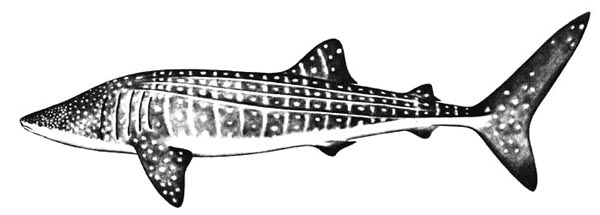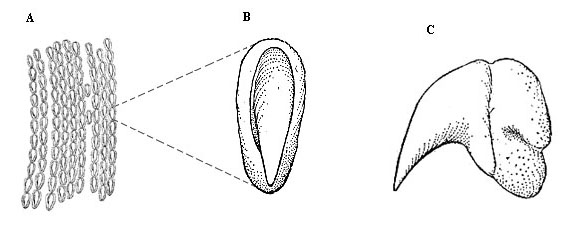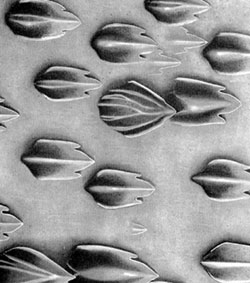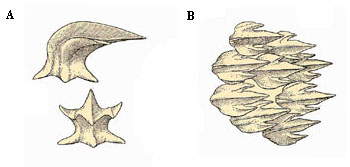One of the most amazing visitors we have on the Similan Islands are Whale Sharks. These gentle giants are frequent visitors year-round, though most frequently seen in March and April.
If you find this interesting please visit WhaleShark.org for more information on how you can help.
Wicked Diving also offers the unique opportunity to dive with and learn more about Whale Sharks and Manta Rays in February and March of 2010.
Taxonomy
The whale shark was first described and named by Andrew Smith in 1828, based on a specimen harpooned in Table Bay, South Africa. Historically, there have been many synonyms (alternative scientific names) for family, genus and species names. The first scientific printing of the genus name appeared as Rincodon, despite Smith’s desired name of Rhineodon. However, in 1984 the International Commission on Zoological Nomenclature suppressed previous generic variations in favor of genus name Rhincodon, and the family name Rhincodontidae. Others generic names formerly used include Rhiniodon and Rhineodon and the family names Rhiodontidae and Rhineodontidae. Systematically, Rhincodontidae is placed in the order Orectolobiformes, which also includes families such as Ginglymostomatidae (nurse sharks) and Orectolobidae (wobbegongs). The interrelationships between these families are based on anatomical and morphological similarities.Synonyms for the whale shark in past scientific literature include Rhinodon typicus Müller & Henle 1839, Rhinodon typicus Smith 1845, Micristodus punctatus Gill 1865, and Rhinodon pentalineatus Kishinouye 1901.
The genus of the currently valid name Rhincodon typus is derived from the Greek words “rhyngchos” = rasp and “odous” = tooth. The species name is translated as type.
- Common namesWhale shark, basking shark, and whaleshark are common names in the English language used to refer to this fish. Other common names include bagea ni oka, bahiri (Gela), chagrin (French), dámero (Spanish), jinbeizame (Japanese), pez dama (Spanish), rauhhai (German), rekin wielorybi (Polish), requin baleine (French), thimingal sura (Tamil), tiburon ballena (Spanish), tubarão baleia(Portuguese), tuki-tuki (Visayan), tuko (Tagalog), vaame (Swahili), walhai (German), walvishaai (Afrikaans), yaak (Khmer), and yu paus (Malay).
Geographical DistributionThe whale shark has a very widespread distribution, occurring in all tropical and warm temperate seas, except in the Mediterranean. It occurs throughout the Atlantic Ocean, from New York through the Caribbean to central Brazil and from Senegal to the Gulf of Guinea. It also occurs in the Indian Ocean, throughout the region, including the Red Sea and the Arabian Gulf. In the Pacific Ocean it is found from Japan to Australia, off Hawaii, and from California to Chile. - HabitatIn contrast to most sharks from the same order (Orectolobiformes), which are benthic (live on or near the bottom) species, the whale shark is a pelagic (open sea) species. Studies reveal that this shark prefers warm waters, with surface temperature around 21-30º C, marked by high primary productivity (much plankton). It is often seen offshore but commonly comes close inshore, sometimes entering lagoons or coral atolls.
- The whale shark is thought to be highly migratory but currently there is no direct evidence to support this hypothesis. Their movements might be related to local productivity and they are often associated with schools of pelagic fish that are probably feeding on the same prey organisms.
Different geographic locations appear to be preferred at various times of the year. Whale sharks alternatively may undertake either fairly localized or large-scale transoceanic migrations, the movements governed by the timing and location of production pulses and possibly by breeding behavior. Seasonal migrations have been postulated for various areas but more information is needed to confirm these patterns. Each March and April, whale sharks are known to be aggregate on the continental shelf of the central western coast of Australia, particularly in the Ningaloo Reef area. A study was done in this area to provide information on the short-term movements and behavior of this species of shark. Whale sharks are thought to migrate to Ningaloo Reef each year to take advantage of the high zooplankton (microscopic animals) concentrations associated with large-scale coral spawning events occurring during the March and April full moons. A few whale sharks were tracked and some behavioral observations were made while snorkeling in the area. The reaction of the sharks to snorkellers varied between ignoring them to slowly diving. At times when water was flowing out from the reef lagoon, possibly transporting potential prey outside the reef, the tracked sharks swam in large circles adjacent to passes in the reef. The whale sharks also made numerous dives throughout the observation period. It appears that these movements, up and down through the water column, were associated with feeding. Whale sharks have smaller livers than most sharks and could conceivably control their buoyancy by swallowing some air as do the sand tiger sharks (Ondontaspis taurus). Whale sharks were also observed near La Paz, Mexico. Researchers reported that when these sharks were not feeding at the surface, they swam practically without the head turning, gulping, and rhythmical opening and closing of the gill slits, seen during feeding behavior. The mouth was held slightly open, and the skin over the gill openings was quivering as water flowed steadily out the gill slits in the typical ventilation of pelagic sharks. Generally, whale sharks are encountered singly but loose aggregations of over 100 animals have been seen, which suggests that schooling activity does occur. Scientists do not know whether sexual segregation, either locally or geographically, occurs.
- Wicked Diving also offers the unique opportunity to dive with and learn more about Whale Sharks and Manta Rays in February and March of 2010.Biology
- · Distinctive Features
- A streamlined body and a depressed, broad, and flattened head characterize the whale shark. The mouth is transverse, very large and nearly at the tip of the snout. Gill slits are very large, modified internally into filtering screens. The first dorsal fin is much larger than the second dorsal fin, and set rearward on body. The two lobed caudal fin (tail) is semi-lunate in adults; in small juveniles the upper lobe is considerably longer than the lower lobe. The whale shark has a unique “checkerboard” color pattern of light spots and stripes on a dark background.
ex Kato, Springer & Wagner (1967) Bur. Comm. Fish. Circ. 271 
- Whale sharks are greyish, bluish or brownish above, with an upper surface pattern of creamy white spots between pale, vertical and horizontal stripes. The belly is white. The function of the distinctive pattern of body mark is unknown. Many bottom-dwelling sharks have bold and disruptive body markings that act as camouflage through disruptive coloration. The whale shark’s markings could be a result of its evolutionary relationship with bottom dwelling carpet sharks. Distinctive markings in a pelagic species could be linked to social activities such as postural displays and recognition processes. Another possibility is that these pigment patterns could be an adaptation for radiation shielding, important in a species that may spend a significant proportion of time in surface waters possibly exposed to high levels of ultraviolet radiation.
- · Dentition
- Teeth minute, about 300 rows in each jaw. An individual tooth has a single, hooked cusp. Teeth appear to play no role in feeding.
A) Portion of upper dentary band (about 2.5x), B) top and C) lateral view of a single upper tooth (about 9x), ex Bigelow & Schroeder (1948) FNWA 
- · Dermal Denticles
-
Dermal denticles from in front of and a bit below the first dorsal fin
courtesy Garrick (Proceedings U.S. National Museum)
A) Lateral and apical views of dermal denticle (about 75x), B) dermal denticles (about 35x), ex Bigelow & Schroeder (1948) FNWA 
The whale shark has unique denticles (tooth-like scales structures), each with an extremely strong central keel, no lateral keels, and a tri-lobed rear margin. It would appear that the denticles are hydrodynamically important in its pelagic lifestyle.
- · Size, Age & Growth
- The whale shark is the largest living fish. Maximum size is thought to be 20m. The smallest free-living individuals are from 55cm (21.7 inches) long. Sexual maturity in both sexes may not occur until the sharks are over 9m in length. Age estimates for whale sharks are as high as 60 years, but no one really knows how long this species lives.
- · Food Habits
- Whale sharks feed on wide variety of planktonic (microscopic) and nektonic (larger free-swimming) prey, such as small crustaceans, schooling fishes, and occasionally on tuna and squids. Also, phytoplankton (microscopic plants) and macroalgae (larger plants) may form a component of the diet. Unlike most plankton feeding vertebrates, the whale shark does not depend on slow forward motion to operate its filtration mechanism. Rather, it relies on a versatile suction filter-feeding method, which enables it to draw water into the mouth at higher velocities than these dynamic filter-feeders, like the basking shark. This enables the whale shark to capture larger more active nektonic prey as well as zooplankton aggregations. Therefore, the whale shark may be more dependent on dense aggregations of prey organisms. The denser filter screens of this shark act as more efficient filters for short suction intakes, in contrast to the flow through systems of basking shark. Whale sharks are always seen feeding passively in a vertical or near vertical position with the head at or near the surface.
Wicked Diving also offers the unique opportunity to dive with and learn more about Whale Sharks and Manta Rays in February and March of 2010.
The whale shark feeds actively by opening its mouth, distending the jaws and sucking. Than it closes its mouth and the water flow out its gills. During the slight delay between closing the mouth and opening the gill flaps, plankton may be trapped against the dermal denticles lining the gill plates and pharynx. The fine sieve-like apparatus, a unique modification of the gill rakers, forms an obstruction to the passage of anything but fluid, retaining all organisms above 2 to 3mm in diameter. Practically nothing but water goes through this sieve. Individuals have also been observed coughing, a mechanism that is thought to be employed to clear or flush the gill rakers of accumulated food particles. Whale sharks move their heads from side to side, vacuuming in seawater rich in plankton, or aggressively cut swathes through schools of prey. Groups of individuals have been observed feeding at dusk or after dark. The density of plankton probably is sensed by the well-developed nostrils, located on either side of the upper jaw, on the leading edge of the terminal mouth. The frequent turns may keep the whale sharks in the denser parts of the plankton patches, searching and scanning when an olfactory cue weakens on one side or the other. The whale shark’s small eyes are located back on the sides of the head. Because of this, vision may play a much smaller role than olfaction in directing the head turns during surface feeding. One live whale shark pup removed from its dead mother was maintained in captivity in Japan. It did not eat for the first 17 days, even though it swam constantly. This suggests that the pup had substantial stores of endogenous (stored) energy.
- Reproduction
- Historically, there was great scientific debate about the mode of development of whale sharks. It was unclear whether it is oviparous (egg cases expelled from the female’s body and hatched on the sea floor) or ovoviviparous (egg cases hatching in the mother’s uteri, with the female giving birth to live young). Finally in 1995, an 11-meter female whale shark was harpooned off the eastern coast of Taiwan and 300 fetal specimens, ranging in length from 42 to 63cm, were taken from the two uteri. This discovery proved that the species is a live bearer, with an ovoviviparous mode of development. The egg-capsules of this whale shark were amber colored, with a smooth texture, and possessed a respiratory fissure (opening) on each side. The sex ratio was approximately 1:1. It would appear that female whale sharks give birth as they feed in the rich waters of the Kuroshio Current. It is also apparent that the southeast waters off Taiwan are an important birthing area during summer months.
- · Predators
- A juvenile specimen was found in the stomach of a blue shark (Prionace glauca). Another specimen was found in the gut contents of a blue marlin (Makaira nigricans).
- · Parasites
- Many parasitic copepods were found on the lining of the pharynx of a small (60cm total length) whale shark from Taiwan.
Importance to Humans
In the past, the whale shark has been of little interest to man. At present, commercial fisheries for whale sharks are limited, but may expand from an increased demand for food products. In Taiwan approximately 100 whale sharks are taken annually. The whale shark meat fetches a high price in this country, and this fact has stimulated larger harvests over the last years. Fishing for this shark also occurs in the Philippines, particularly in the Visayas and Mindanao areas, providing food for the local fishing communities. Whale shark fins are sold in the Orient, especially in the Hong Kong. Occasionally whale sharks are captured accidentally along the coast of India. Sometimes the flesh is eaten and the liver oil is utilized for waterproofing wooden fishing boats and other appliances, for the manufacture of shoe polish and as a treatment for some skin diseases. The processing of whale shark fins has also been reported in India. Often the whale shark is used as an indicator of waters rich in plankton-feeding fish that will, in turn, attract more valuable species such as tuna. Whale sharks have been kept in aquaria in Japan, but their large size and specialized diet precludes this species from being mainstream aquarium species. In a few locations where the presence of whale sharks appears to be predictable, they are increasingly targeted by commercial tourist operations.
Danger to Humans
Generally considered harmless. However, there have been a few cases of whale sharks butting sportfishing boats, possibly after being provoked. Usually the sharks are more at risk from being struck accidentally by vessels whilst basking or feeding on the surface.
Conservation
Some biological characteristics, such as large size, slow growth, late maturation and extended longevity, probably limit recruitment and make whale sharks susceptible to overexploitation. These characteristics also suggest that populations are slow to recover from any overfishing. The whale shark is listed on the World Conservation Union’s Red List of Threatened Animals as “indeterminate” status. This category applies to species known to be endangered, vulnerable or rare, but currently lacking enough available information to appropriately place it into one of these three categories. The whale shark is listed by the AFS (American Fisheries Society) as conservation dependent (reduced but stabilized or recovering under a continuing conservation plan) in both the U.S. Atlantic and the Gulf of Mexico. However, it is considered not at risk in the Gulf of California. In the Maldives and Philippines there is legislation banning all fishing for whale sharks. This protection was introduced because of the possible serious impact that the fishery may be making on whale shark stocks.
The predictable occurrence of whale sharks in a few localities, such as in Western Australia, has led to the development of an expanding tourism industry. In this area the whale shark is a protected species and its tourism has been managed through a system of controls, including the licensing of a limited number of operators tours. In addition, there have been calls from conservation-minded divers worldwide to refrain from riding, chasing, or in any way harassing any large marine animals, including whale sharks. Recently, some observations made on the Ningaloo Reef’s whale sharks provided the information that regular diving is a normal behavior of these sharks and not an avoidance reaction during contact with humans. However, the natural variability in whale shark abundance and distribution, the reasons for aggregations at some areas, and the carrying capacity of the industry are still unknown. Consequently, evidence of any impact is difficult to obtain and interpret.
The whale shark is listed as “Vulnerable” with the International Union for Conservation of Nature and Natural Resources (IUCN). The IUCN is a global union of states, governmental agencies, and non-governmental organizations in a partnership that assesses the conservation status of species.
Again huge thank yous to the rock stars at the Florida Museum of Natural History.
Wicked Diving also offers the unique opportunity to dive with and learn more about Whale Sharks and Manta Rays in February and March of 2009.




